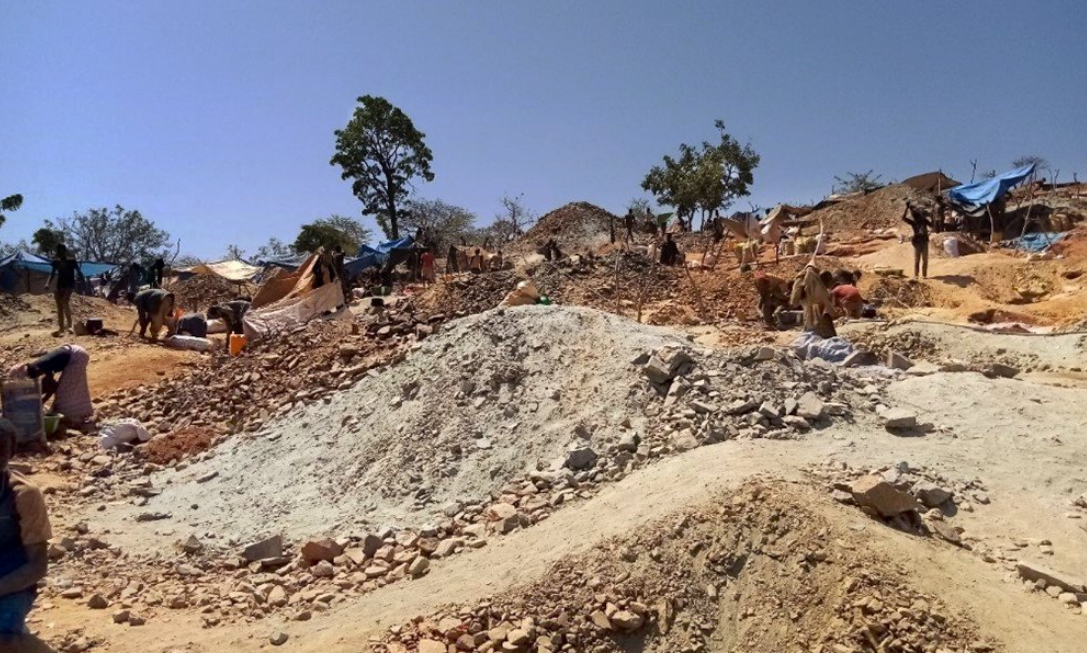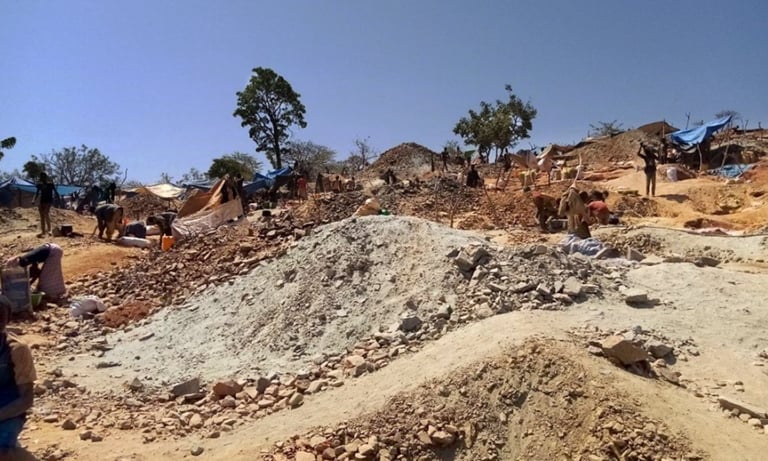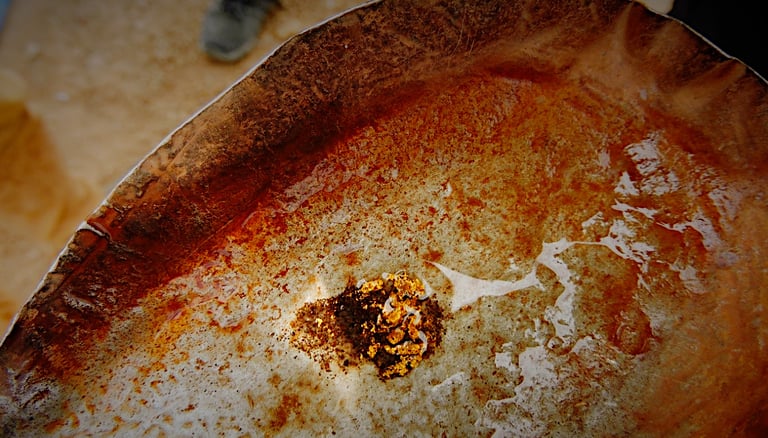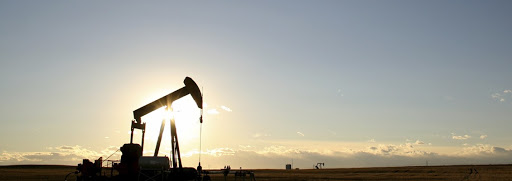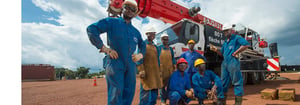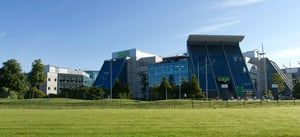Panthera Resources Plc (LON:PAT), the Gold exploration and development company with assets in West Africa and India, has announced the drilling programme, as announced on 6th June 2022 at the Bassala Project in Mali has now ended with all samples delivered to the assay laboratory.
Highlights
· The drill programme follows highly encouraging results from the drilling programmes reported in 2021 and early 2022
· 2,601m reverse circulation (RC) drilling completed in 23 drill holes
· 3,030m air-core (AC) drilling completed in 50 drill holes
· Significant silica-chlorite-sulphide alteration and associated quartz veining were observed for most targeted intervals
· The samples have been submitted to the SGS laboratory in Bamako with results expected during July 2022
Commenting on the announcement, Mark Bolton, Managing Director of Panthera said:
“The continued and rapid progress at Bassala is a credit to our operations team in Mali. The project has been accelerated from a grassroots prospect through a gold in soil and geophysics survey, and two drilling programmes in 2021 for 18935 metres. The June 2022 AC drilling programme, comprising 5631 metres, was again completed on time and within budget with no safety incidents reported.
The Basala project has a large number of mineralised targets with three areas prioritised for follow-up AC/RC drilling in this programme. Logging of drill cuttings has observed strong quartz veining and alteration (sulphide or limonite after sulphide, chlorite and silica). We look forward to the assay results expected later in the quarter.”
June 2022 Drill Programme
The June 2022 drill programme was designed to follow up results of the earlier drilling in the three separate prospect areas in the Bassala project, these being named ‘Bassala North’, ‘Bassala Central ‘and ‘Bassala South’. Panthera is pleased to report the current program was completed ahead of schedule, on budget and without any safety incidents.
Bassala South Prospect
In the Bassala South prospect at least two subparallel zones trending NNW – SSE have been highlighted with:
· artisanal workings
· gold in soil anomalies
· structures identified from the geophysical survey; and
· significant gold anomalism in the 2021 air core drilling programme.
These structures or targets have now been drill tested with deeper RC drilling and further AC geochemical testing and downhole logging suggest zones of quartz veining may represent depth extensions of mineralisation seen in surface geochemistry and the shallower air core drilling.
Bassala Central Prospect
Exploration in the Bassala Central prospect is targeting the deeper structures identified in earlier work and highlighted by several artisanal zones of workings that are also located on the north-south structures as interpreted from the gradient array IP survey.
Bassala North Prospect
In the Bassala North prospect, several RC holes were drilled to test the southern strike of areas of artisanal workings while AC drilling followed up on the 2021 drilling anomalies, geophysical structure, and artisanal digging targets.
In total, 3,030m of air-core (AC) drilling was completed in 50 drill holes and 2,601m of reverse circulation (RC) drilling was completed in 23 drill holes.
The current programme has successfully identified that sub-vertical quartz veining occurs and subject to positive analytical results will be the basis for target planning in the next phase of targeted exploration.
Logging of drill cuttings has supported our targeting rationale for this phase of drilling with strong quartz veining and alteration (sulphide or limonite after sulphide, chlorite and silica) observed at the targets tested. Sulphides are generally represented by boxwork textures or limonite replacing sulphides, but occasionally fresh pyrite and/or arsenopyrite have been logged.
A total of 1,350 composite samples have been collected from the air-core and RC drilling (including standards, duplicates and blanks) have been despatched to SGS Laboratory in Bamako and are currently being assayed for gold via low-level detection (1ppb Au) fire assay. It is planned to re-assay gold mineralised intersections at 1 metre intervals.
It is expected that the assay results will be received during 3Q 2022.
Project Overview
The Bassala project is located within the highly gold-endowed Birimian volcano-sedimentary belt in southwestern Mali, approximately 200km south of the capital city Bamako.
The belt hosts the Kalana (Endeavour Mining, 4Moz) and Kodieran (Wassoul’or, 2Moz) gold mines, both within a few kilometres of the Bassala project. The adjacent belt to the west is also well endowed with gold and hosts the Siguiri (AngloGold Ashanti (“AngloGold”), 17Moz), Tri-K (Avocet Mining, 3Moz), Kobada (African Gold Group, 3Moz), and Yanfolila (Hummingbird Resources, 2Moz) gold mines.
In the second half of 2020, the Company recommenced exploration activity at Bassala with the results of gold-in-soil and ground magnetic surveys announced on 26 March 2021. These surveys confirmed that two major gold anomalous trends are present, a 9-kilometre long north-northeast trending zone and a second, cross-cutting, 3-kilometre northwest-trending zone. These zones appear to be continuations of significant regional mineralisation trends.
Following the successful gold-in-soil and ground magnetic surveys, the Company initiated an IP survey with the results announced on 10 June 2021. The IP survey confirmed the previous interpretations and identified:
· Several high-order chargeability highs – most probably indicative of disseminated sulphides at depth
· Three of the chargeability highs can be traced over strike lengths of 6,000m, 4,700m and 2,200m
· Many of the chargeability highs are associated with geochemical anomalies and artisanal mining activity
Reflecting the positive results from the IP survey, the Company accelerated its drilling programme at Bassala, with an AC drilling program in 2021.
Historical Drilling
Whilst the licence hosts prolific artisanal mining activity, the only significant previous systematic exploration was undertaken by AngloGold Exploration (AngloGold) during the period 2010-2011. That work consisted of broad spaced soil sampling at 800m x 100m spacing with limited infill to 400m x 50m and 200m x 50m spacing in selected areas.
AngloGold subsequently undertook broad-spaced RAB drilling over the main soil anomalies and a total of 3,111m was completed in 113 drill holes at an average depth of 27.5m. The drilling identified significant mineralisation beneath the laterite cover, including:
· 21m @ 1.15g/t Au from 15m including 3m @ 4.52g/t Au from 33m
· 15m @ 0.56g/t Au from 3m to the end of the hole
· 3m @ 0.78g/t Au from 21m to the end of the hole
· 6m @ 0.49g/t Au from 39m to the end of the hole
· 3m @ 1.55g/t Au from 9m
· 3m @ 1.16g/t Au from surface
June 2021 Drilling (Panthera)
Reflecting the positive results from the IP survey (announced on 10 June 2021), the Company initiated its maiden drilling programme at Bassala. This was terminated in July 2021 due to the onset of the wet season with a total of 9,997m air core (AC) drilling completed in 164 drill holes and 392m reverse circulation (RC) drilling completed in 4 drill holes.
That work resulted in widespread gold mineralisation being identified in very widely spaced drill traverses with better intercepts from the 5m composite sampling including:
· 20m @ 2.12g/t Au from 10m incl. 10m @ 3.79g/t Au from 20m
· 10m @ 3.45g/t Au from 60m incl. 6m @ 6.59g/t Au from 60m
· 5m @ 5.10g/t Au from 15m
· 5m @ 2.75g/t Au from 55m
· 45m @ 0.57g/t Au from 25m incl. 5m @ 2.53g/t Au from 40m
· 30m @ 0.88g/t Au from 20m incl. 5m @ 3.18g/t Au from 20m
· 20m @ 0.75g/t Au from 15m incl. 5m @ 1.92g/t Au from 15m
· 10m @ 0.96g/t Au from 35m incl. 5m @ 1.44g/t Au from 35m
· 25m @ 0.51g/t Au from 15m incl. 5m @ 2.07g/t Au from 20m
· 5m @ 1.98g/t Au from 40m
· 6m @ 1.59g/t Au from 70m (end of hole)
· 5m @ 1.41g/t Au from 35m (end of hole)
These were excellent initial results from the broad-spaced, drill pattern that only penetrated to the base of
weathering. Further details of this drilling may be found in the RNS’ dated 24 August 2021, 10 September 2021 and 30 September 2021.
December 2021 Drilling (Panthera)
Given the excellent results from the June 2021 drilling programme, the Company continued the drilling programme after the wet season and the phase 2 programme (mainly situated in the northern part of the license area), consisting of 8,546m drilling in 152 AC drill holes, was completed in late 2021. Further details of this drilling may be found in the RNS’ dated 9 December 2021, 14 January 2022 and 17 February 2022.
Assay results from this drilling included the following intercepts:
· 25m @ 0.87g/t Au from surface incl. 5m @ 2.96g/t Au from 10m
· 30m @ 0.25g/t Au from 15m incl. 10m @ 0.50g/t Au from 20m
· 2m @ >8.00g/t Au from 55m at end of hole (re-assays at 3.01, 8.40 and 1.06g/t Au)
· 5m @ 1.10g/t Au from 5m
· 15m @ 0.40g/t Au from 10m incl. 5m @ 0.77g/t Au
· 5m @ 0.89g/t Au from 30m
· 16m @ 0.90g/t Au from 40m at end of hole incl. 5m @ 2.58g/t Au from 40m
· 55m @ 0.29g/t Au from 5m at end of hole incl. 5m @ 1.05g/t Au from 30m
· 5m @ 2.45g/t Au from 5m
· 1m @ 0.42g/t Au from 50m at end of hole
· 5m @ 0.92g/t Au from 55m at end of hole
· 3m @ 0.68g/t Au from 15m at end of hole
· 5m @ 0.44g/t Au from 55m at end of hole
· 5m @ 1.19g/t Au from 35m

